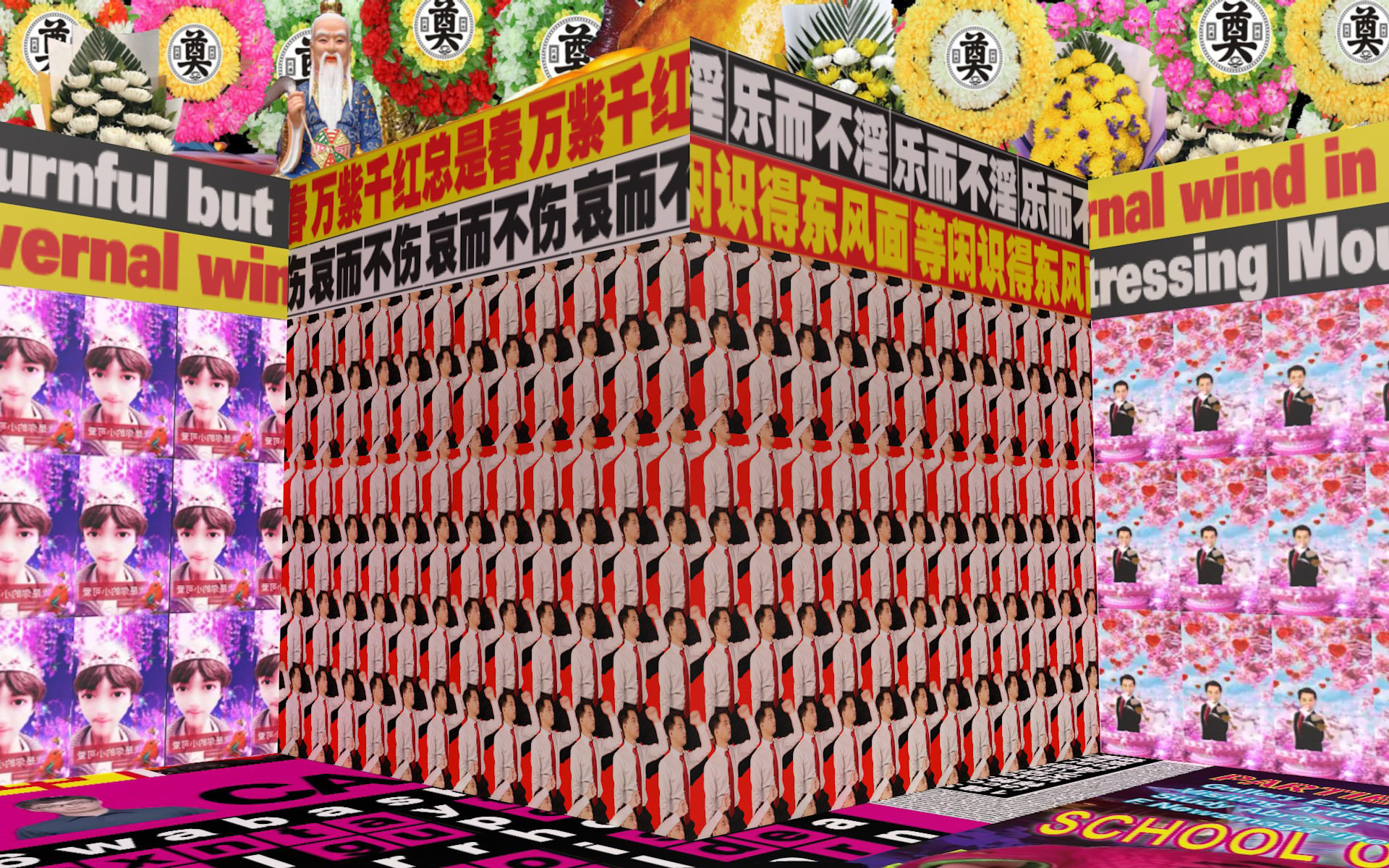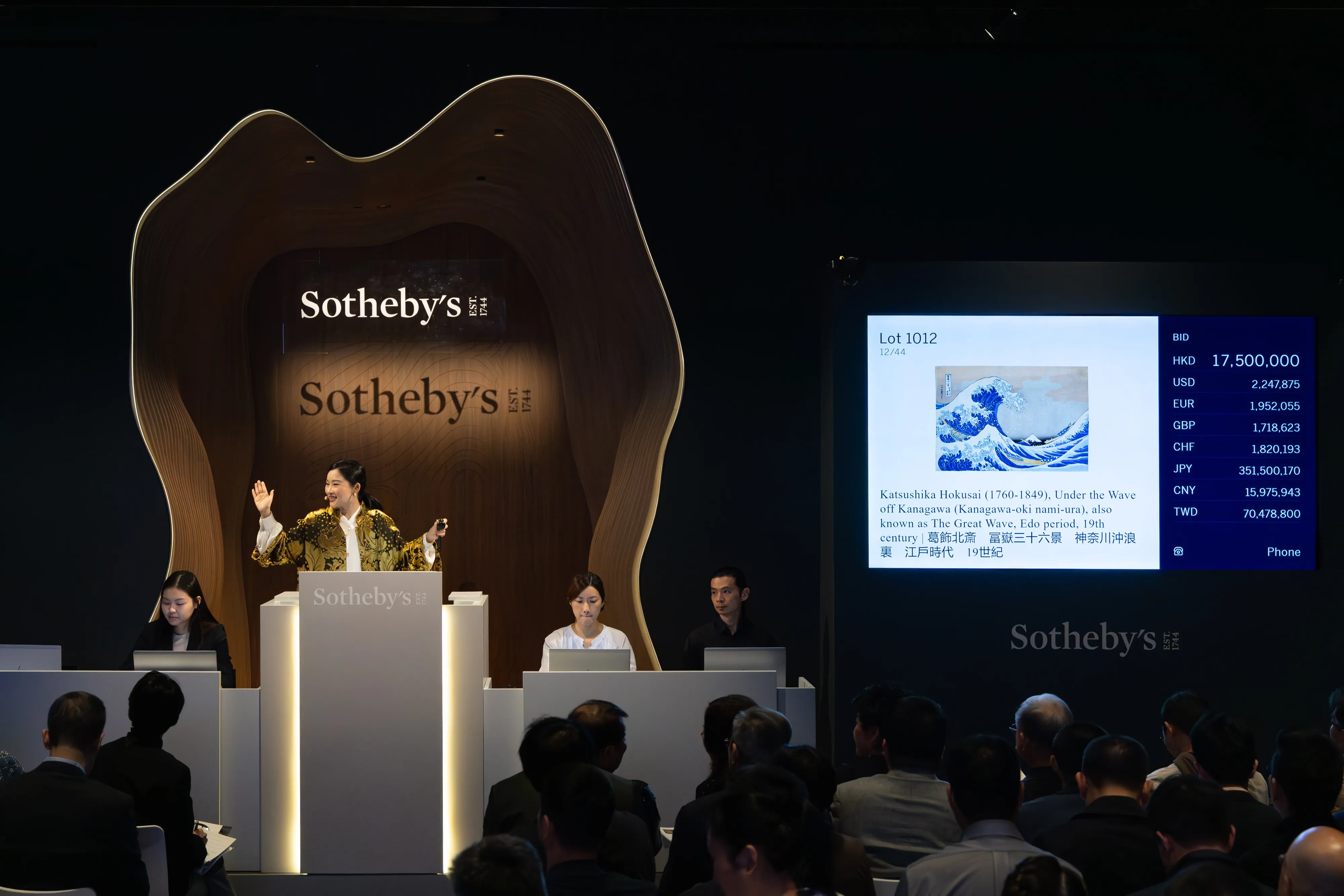Michael Xufu Huang is one of the freshest faces in China’s art scene. Having graduated from the University of Pennsylvania this year, he has hit the ground running with the exhibition Heart of the Tin Man, which opened this past weekend at Beijing’s M WOODS, the museum he co-founded with collectors Lin Han and Wanwan Lei.
Huang and M WOODS are part of a new movement in China, led by a new generation of collectors founding private museums. Huang adds another dimension of newness in focusing specifically on collecting new media and post-internet art, and also being the youngest of his counterparts (he’s only 23).
Huang is known for many things: being a fashionista (he wore Gucci head-to-toe for W Magazine), an Instagram celebrity (@michaelxufuhuang has 32k+ followers to date), and globetrotter (seen at all the major art fairs). But, with Heart of the Tin Man, the first major exhibition he organized for M WOODS, he is asking to be taken more seriously.
The works in this exhibition are nuanced and intriguing. They do well in addressing more meaty issues, like social constructions of femininity in Amalia Ulman’s performance photography (originally made for Instagram) and Institute for New Feeling’s exploration of VR’s potential to be a new frontier of e-commerce. As a whole, the exhibition presents works by a diverse group of artists, ranging from emerging figures in the field of new media art to those who have participated in exhibitions at the New Museum and Guggenheim in New York and Whitechapel Gallery and the Tate Modern in London. Many artists have never been seen in China before, and bringing them here is one of the things that M WOODS does best (they mounted an Andy Warhol show in Beijing last year, which was met with a massive turn-out). By including artists from the US, Europe, Middle East, and China, the exhibition is very much global in scope — something that smaller or B-list art spaces in Beijing lack with their exclusive focus on Chinese artists. As a ’90s kid who went to London for high school and the US for college, Huang is able to present the artists of his collection as not being merely defined by their physical location, but instead connected by the very media they use to make work — the internet, social media, new technologies, and the global economy.
Indeed, M WOODS aims to put itself on the map by building an institution that can rub shoulders with MoMA. With Huang at its head, M WOODS is already pulling out the stops to bring impressive work to China, and it holds promise for maturing as its collection grows, its curatorial arm expands, and the nascent art ecosystem for institutions here continues to develop.
To give Radii readers a better idea of how the show came together and his approach to collecting, Huang answered a few of my questions:
Radii: You’re one of the most well-known “millennial collectors.” As Artnet has pointed out, millennial collectors “network and hustle,” getting more directly involved in the art world and going beyond collecting simply for its investing and party-hopping opportunities. In addition to being one of M WOODS’ founders, you are also on the board of the New Museum. Can you tell us why you wanted to get involved in these institutions? And what sort of things do you do for them?
Huang: For me, it’s important to support artists of my generation and to encourage other young people to see the value of visual art and culture. These are shared goals of both the New Museum, where I sit on the board of trustees, and M WOODS, which I joined as co-founder in 2015. I am the youngest and also the only Chinese member of the New Museum board. Thus far, I’ve participated in reviews of future development plans for the museum. Last spring I helped to organize a research trip to Beijing for their patrons. I help to create a general awareness of specific age and geographical brackets. At M WOODS, my role is much more hands-on. My first show, Heart of the Tin Man, opened June 30.
Another thing that millennial collectors are known for is doing their own research, even visiting artist studios themselves and hanging out with them. Is this how Austin Lee’s portrait of you came about? Tell us a little more about how you know him.
H: Maybe millennials are just going about collecting in a different way. I definitely think online channels have made acquiring art a much more democratic endeavor, but yes, like most collectors, I enjoy visiting artists at their studios for the added perspective it lends to their practices and material concerns. Austin Lee has actually visited Beijing before, but I first him at his solo show at Postmasters Gallery. Watching his career blossom has been a rewarding experience. He spray-painted a portrait of me staring at my phone when I was visiting in New York once, and I thought it epitomized Heart of the Tin Man in a lot of ways, so I put it in the show.
Are there other artists from the Heart of the Tin Man whom you’ve met/become friends with?
H: Over the past several years collecting and researching for the show, I’ve spent time with each of the artists.
You’ve said that your interest in collecting new media and post-internet works comes from growing up in the digital age. Can you tell us more about what you were thinking in selecting works for the exhibition? Are there any themes that certain works have in common?
H: The main theme is the dual effects of technology: its advantages, while obvious, also serve to diminish real-life sensation. With the increased prevalence of mobile and digital technologies, our methods of acquiring information and perceiving the world have completely changed. I think the works selected are using technology to critique its effect on our lives.
I noticed a contrast between the shiny-high-tech-plastic-ness of the artworks and the museum space, which was once a factory, right? Is this something intentional? (If so, can you tell us more about your ideas for creating this contrast?)
H: Yes, the space now stands in complete contrast to the quiet, introspective layout of Cristof Yvoré: An Ode, which closed less than a month before. I think art shouldn’t simply exist in a white cube. The viewing experience becomes more engaging in an imperfect space. There’s a great contrast between the first floor — its unpolished look — and the second floor, especially with the environment used for Amalia Ulman’s work, which comments on the fantasy of upward mobility prevalent over social media. I also think it’s a comment on current lifestyle. It seems we’re less concerned with our physical surroundings as long as there’s a strong internet connection available.
Now that you’ve graduated from Penn, are you going to be working on curating more shows/starting more projects/doing new research (maybe moving beyond being the “college student with his own museum”)? What sort of things can we look forward to from you?
H: On the museum side, we’re working on a solo exhibition of Lu Yang in the fall. But, a good artist doesn’t say what he is doing next. You will have to wait and see 😉

















